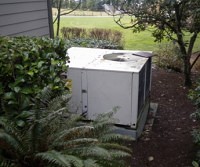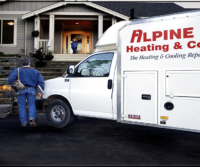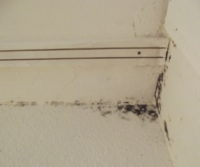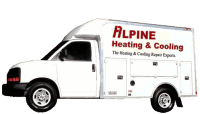
While not every home in the Pacific Northwest and the Skagit Valley has an air conditioner, many newer homes do indeed have some type of air conditioning system. For those Skagitonians with AC, there are some easy and effective ways of saving energy when it comes to keeping your home cool during the hottest days of summer. For example, having an air conditioning tuned up and cleaning or replacing filters on a monthly basis can improve efficiency and save money over the short and long-term.
Keep Your Home Just A Little Bit Cooler
Also important is to make full use of window treatments like blinds and shades during the day to keep the heat of the sun under control. This is a free way to keep your home just a little bit cooler during the hottest times of the summer. Another great way of saving energy when it gets warm in the Pacific Northwest is to make full use of ceiling fans.
Reduce The Amount Of Heat That Accumulates In Your Home
Ceiling fans are great way of keeping airflow moving throughout a home while also reducing the temperature by just a few degrees. Another great tip for reducing energy usage during the summer is to use appliances like the dishwasher and washer and dryer at night in order to reduce the amount of heat that accumulates in your home. Many people today also choose to set their water heater temperature at around 120°F. This is a safe temperature and will also help to reduce energy usage as compared to keeping it at a hotter temperature.
A Few Pennies A Day Can Add Up
If you have additional freezers or refrigerators in your garage consider deactivating them, unplugging them or turning them off when not in use. This will reduce the amount of energy that these appliances use even when they are not actively keeping something cold. Along with appliances unplugging anything including TVs and DVD players can also save money. While it may not be a substantial amount of money, a few pennies a day can add up over a year’s time. Contact Alpine Heating & Cooling today to learn more about cooling your home during the summer and saving money on energy!

As spring arrives and summer approaches it is important to maintain an HVAC system at peak operating performance year-round. Keep in mind that it is vitally important to avoid neglecting your HVAC system really anytime of the year. Keeping a system in top condition year-round helps to ensure that it will work when it is needed the most. All HVAC systems require regular cleaning and proper lubrication. This is especially true following the winter months. This reduces the chances of breakdowns especially during times of the year when you want your AC to be working at peak condition.
Improve Overall Health and Well-being
Another important factor to consider when it comes to continued ongoing maintenance on an HVAC system is that it improves the air quality in your home. It helps to reduce dust buildup and limits the amount of time that a system operates with a possible clogged air filter. Good indoor air quality can greatly improve overall health and well-being. Also important is that regular and routine HVAC maintenance and upkeep will improve efficiency and save money. A system that is clean and that operates efficiently will not have to work so hard for the results you are expecting.
Save Money and Keep Your System Working Without Interruption
It is a proven fact that a dirty HVAC system with coils that have layers of dust and dirt on them can increase energy usage by up to 30% or more. Leaks are another serious concern that can end up increasing energy usage as well. Whether your system is leaking or it is clogged, having regular maintenance and inspections can save money and keep your system working without interruption. Working with an experienced and knowledgeable team of professional HVAC experts is the best way to make sure that your system is cared for in the right way.
Return Your System To Full Functionality
Homeowners are choosing to have regular routine maintenance inspections of their HVAC systems. Whether it is low refrigerant or a malfunctioning component, a seasoned and experienced technician will find the problem quickly and return your HVAC system to full functionality. Contact Alpine Heating & Cooling today to learn more about our HVAC system maintenance repair and upkeep for homes and business in the Skagit Valley including Mount Vernon WA, Burlington WA, Anacortes, Bow, WA, Sedro-Woolley and Stanwood.

Black Mold Has Significant Negative Health Implications
While the term “toxic mold” isn’t exactly accurate, many molds, including so-called “black mold,” (Stachybotrys spp.) produce toxins that negatively impact human health.
According to the Centers for Disease Control:
In 2004 the Institute of Medicine (IOM) found there was sufficient evidence to link indoor exposure to mold with upper respiratory tract symptoms, cough, and wheeze in otherwise healthy people; with asthma symptoms in people with asthma; and with hypersensitivity pneumonitis in individuals susceptible to that immune-mediated condition. The IOM also found limited or suggestive evidence linking indoor mold exposure and respiratory illness in otherwise healthy children.
Molds grow from spores, which are ubiquitous in our indoor and outdoor environments and become active when conditions are right. Persistent moisture is the biggest factor that causes mold to grow and produce more spores and harmful toxins. Since the proliferation of Stachybotrys depends so strongly on moisture, the best place to begin is to figure out where excess moisture in our homes comes from and how we can mitigate its accumulation.
Where Does Problem Moisture Come From?
Any water-using appliance or fixture, especially ones using or producing hot water, are strong sources of indoor moisture.
- Showers (run the fan!)
- Washing machines
- Dishwashers
- Sinks and tubs
- Unvented combustion sources (gas stoves and space heaters, typically)
- Steam irons
Cooking, too, releases moisture into the air, as does human respiration (moisture is expelled from the lungs and through the skin). When you go outside on a cold day and “see your breath,” you are actually seeing the moisture you exhale every time your lungs fill and empty. If you and your whole family are snug in your warm house with the windows and doors shut all winter, you can see how that might become a problem!
The World Health Organization (WHO) identifies eleven common sources of moisture-related issues in buildings (see the entire list here on page 54). A complete discussion of them all is beyond the scope of this article, but we will touch on those related to heating and cooling and how they can be mitigated.
The following are excerpted from that list:
- Plumbing leaks and spills, perhaps resulting from improper design, installation,
operation or maintenance (e.g. failure to inspect and repair plumbing
leaks) - Infiltration of warm, moist outside air through cracks and holes in the enclosure
during warm, humid weather – which can cause condensation on materials
that are cooler, because they are part of the air-conditioning system – have
been cooled by air-conditioned indoor air or are in cool basements or crawl
spaces - Exfiltration of warm, moist indoor air through cracks and holes in the enclosure
during cold weather, which can cause condensation in wall and ceiling
cavities and attic spaces - Intentional or accidental vapor barriers in the wrong place, which can lead to
condensation in the building enclosure - Unvented or poorly vented sources, such as swimming pools, spas, aquariums,
dishwashers, combustion devices, kitchens and baths, from which water
may condense in the building enclosure or, if indoor humidity levels are high
enough, on materials in the space itself (e.g. ceilings, walls, furniture, cold water
pipes or air-conditioning air supply diffusers) - Insufficient dehumidification by HVAC systems,
which may result in levels of interior humidity that are high enough to
cause mould to grow on furniture, walls, ceilings or air-conditioning supply
diffusers - Poor condensate drainage due to heating, ventilation and air-conditioning
system deficiencies; condensation from cooling coils may overflow drain pans
or leak from condensate drain lines
Sources of Excess Moisture Vary by Season
In Skagit county, we have four wonderful seasons. Each is defined by a typical air humidity level and temperature range. Our climate determines how we condition our spaces for both our comfort and health in each season. The winter is typically cold and moist, with temperate summers that can vary from dry to humid depending on the prevailing weather pattern.
Many of the conditions experienced in Skagit county can quickly cause an excess of moisture and mold buildup in the home. Here are some tips to avoid mold buildup.
During (or before!) the heating season:
- Install double pane windows (at minimum) or shrink-wrap plastic indoor window covers
- Ensure sufficient indoor/outdoor (fresh) air changes – run fans, open a window or two, or install an ERV/HRV (energy/heat recovery ventilators)
- Maintain enough heat in the space (minimum temperature) to overcome the condensing effect of unabated drafts and cold air leaks
During the cooling season:
- Use a standalone dehumidifier when indoor humidity exceeds 50%
- Ensure careful insulation and encapsulation of cooling lines where they pass through building materials
- Properly installed and intact (functioning) vapor barrier
- Maintain the temperature in a small range rather than large warming and cooling cycles
- Keep condensate drains clear – make sure condensate goes to a sewer drain or outside and away from the building and foundation
- Use a toilet tank insulator kit or plumb warm water (with a mixing valve) to your toilet tank
All seasons:
- Avoid large swings in indoor temperature that alter the ability of indoor air to hold moisture
- Keep indoor humidity under 50% (use an indoor humidity meter (like this one, under $10) to monitor it
- Make sure that you home has good overall insulation
- Be sure you have a properly designed, installed, and intact vapor barrier
- Insulate all exposed or uninsulated cold water pipes – condensation or freeze (and subsequent leak) risk
I’m Feeling Overwhelmed! Help!
This (partial) list of ways that moisture can build up and contribute to harmful black mold growth can be a bit daunting. Sometimes, I feel the same way when I’m struggling with my computer and it just won’t do what I need it to do! I have found the solution, and I think it will help you, too: call a professional.
Alpine Heating and Cooling is not a mold remediation business, but we can come out and take a look at your heating and air conditioning equipment, which is a common source of moisture problems. We’ll make sure it’s properly installed, functioning at top efficiency, and that drains are clear, and lines are insulated. You’ll be ready for whatever mother nature throws at us here in Skagit county.
Give us call or send us an email – we’d love to hear from you.
For even more reading, check out this fantastic publication from the University of Wisconsin Cooperative Extension called, “Winter Home Moisture Problems.”


